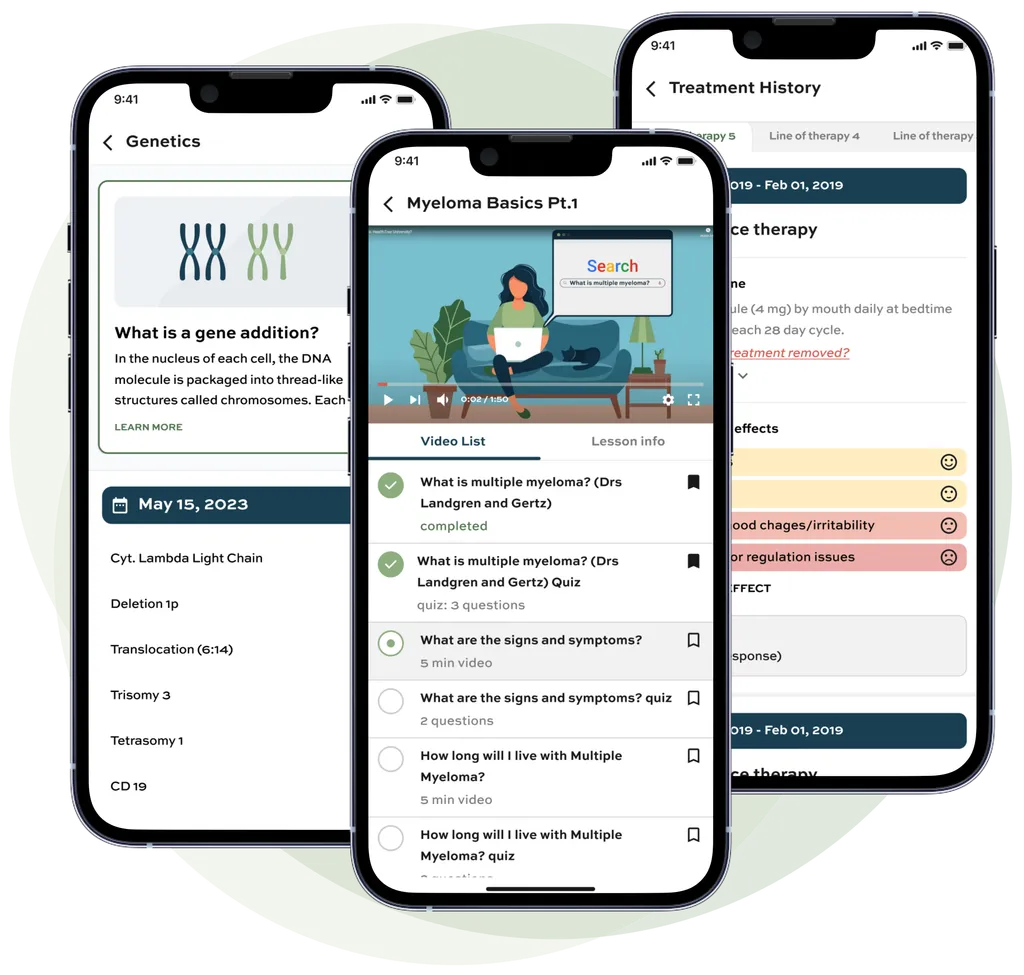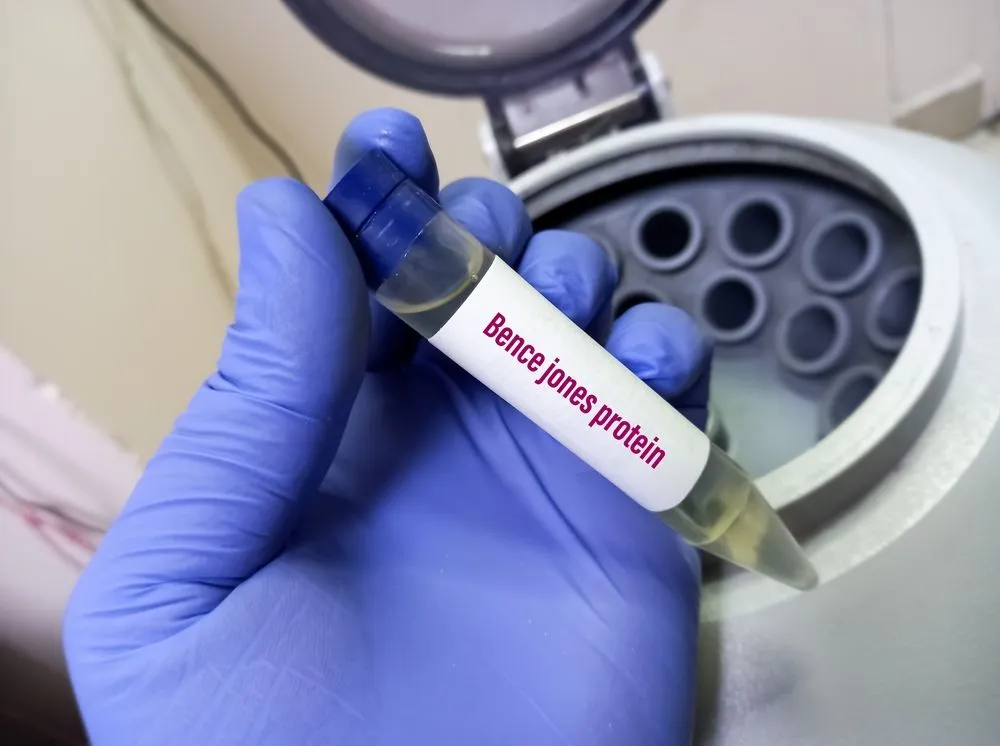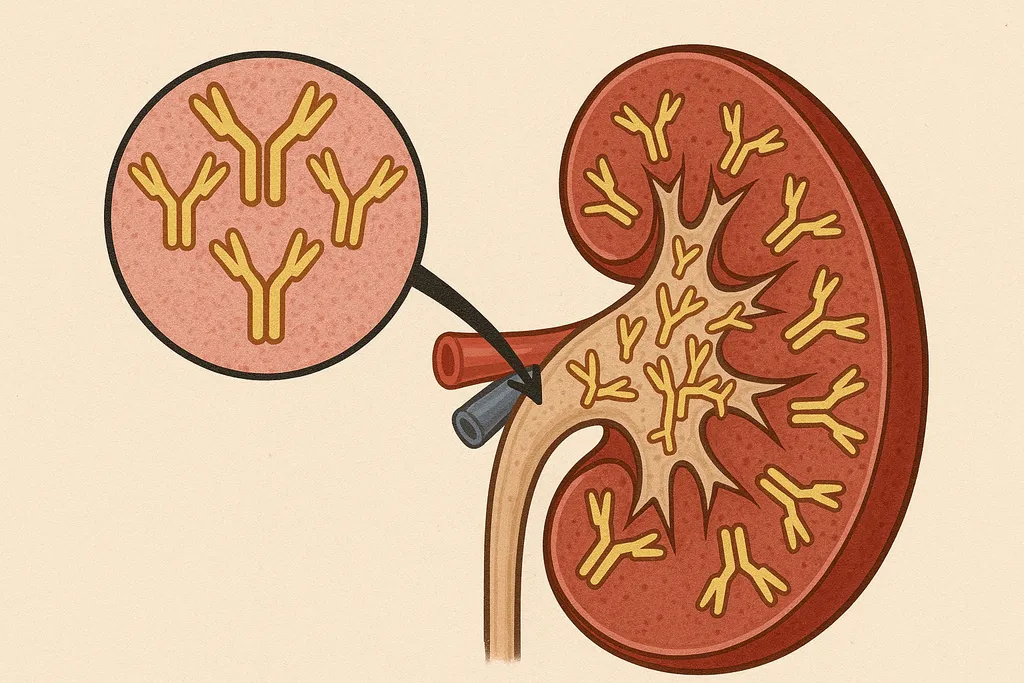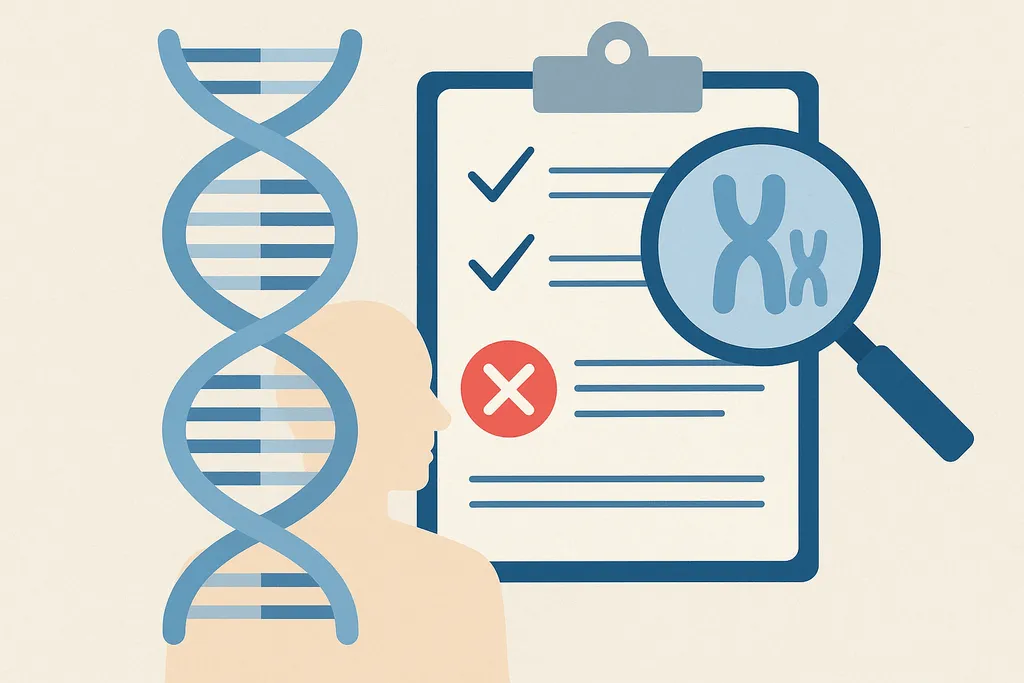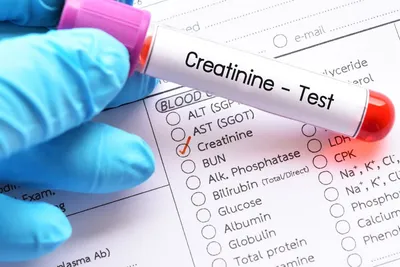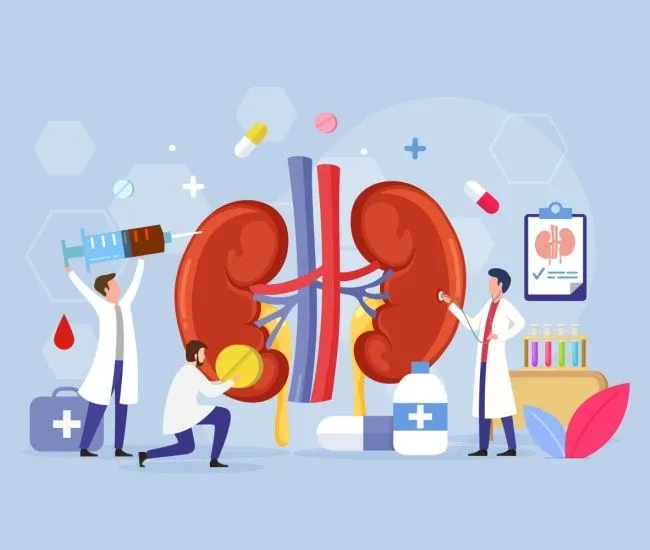Understanding Relapse In Multiple Myeloma

Writing articles about multiple myeloma relapse is never an easy task. It's not something I'm writing to invoke fear or preoccupation in one's mind, but rather, I'd like to educate you the best that I can so that you can be prepared for the future. If you're feeling up to it, let's learn together.
What Is Considered a Relapse in Multiple Myeloma?
Relapse refers to the recurrence of active disease after a period of remission, or as we call it in myeloma, a response (when the disease is controlled or undetectable).
Two different kinds of relapses can occur in multiple myeloma.
Biochemical Progression "Relapse"
The first is a biochemical relapse detected in your labs by your physician.
It's also possible that you might have noticed the trend of your labs going up because you are actively tracking them and confirmed a biochemical relapse with your myeloma specialist.
Ideally, you and your physician have both been keeping a close eye on your lab values and notice any upward trends that seem concerning. Your doctor will tell you (but ask if you're nervous!) if those lab values increase to a concerning level.
Biochemical relapses often mean that while the relapse in detectable in your labs, the myeloma has not risen to a level that requires immediate treatment. Most people don't have symptoms (at least, any new symptoms) while experiencing a biochemical relapse.
Although biochemical relapses can be overwhelming, it is a great opportunity for you to sit down with your doctor and talk about the next steps. Make sure that you are open with your doctor about your personal philosophy.
If the treating team is ok with it, would you rather watch and wait? If you're anxious to get treated again, is your doctor on the same page?
You can also discuss what treatment options are available to you. Consider joining a clinical trial that feels right to you.
Clinical Relapse
This is what we typically call a "relapse" in the cancer world. The myeloma has escalated quickly, new symptoms are arising, perhaps new plasmacytomas or lesions are forming, and the pain is returning.
While this can happen because your physician neglected to notice trends in your labs or because you were perhaps not being monitored often enough, unfortunately, this can also just simply occur because you have high risk disease, or a new high-risk, aggressive clone developed and progressed much quicker than anyone anticipated.
This usually requires treatment right away, so hopefully you have been speaking with your doctor about the next treatments and steps and what you think would be right for you moving forward.
Learn more in the following HealthTree University:
How Many Times Can Myeloma Relapse?
Multiple myeloma is a complex and often unpredictable disease, and the number of times it can relapse varies from person to person.
The number of relapses a person experiences can depend on various factors, including the characteristics of the disease, the effectiveness of treatments, the person's overall health, and advances in medical therapies.
Some individuals may experience multiple relapses over a span of several years, while others might have a less aggressive disease that progresses more slowly and may not experience as many relapses.
With advancements in treatment options and the development of novel and immunotherapies, the landscape of managing multiple myeloma has evolved, potentially allowing for longer periods of disease control and extended survival.
Each relapse may lead to adjustments in treatment plans, including changing or combining different medications, considering stem cell transplantation, and exploring clinical trials of new therapies.
It's important for individuals with multiple myeloma to work closely with their healthcare team to develop a personalized treatment plan that takes into account their specific disease characteristics, response to treatments, and overall health status.
The good news?
Research in the field of multiple myeloma is ongoing, and new therapies are continually being developed. This has led to improved outcomes and extended survival for many patients.
However, the course of the disease can still be quite variable, and it's not possible to predict the exact number of relapses a person may experience. Regular monitoring, open communication with healthcare providers, and staying informed about the latest advancements in treatment are crucial for managing multiple myeloma effectively.
How is Relapsed Myeloma Treated?
The treatment of relapsed multiple myeloma depends on several factors, including the patient's medical history, the treatments they have received in the past, the duration and depth of their previous responses, their overall health, and the specific characteristics of the relapsed disease.
Treatment approaches for relapsed myeloma can vary, but here are some common strategies:
1. Targeted Therapies: Many new targeted therapies have been developed for the treatment of relapsed myeloma.
These therapies specifically target different aspects of myeloma cells, their growth, and the bone marrow microenvironment. Examples include proteasome inhibitors (such as bortezomib or carfilzomib), immunomodulatory drugs (such as lenalidomide or pomalidomide), and monoclonal antibodies (such as daratumumab, elotuzumab).
Immunotherapies such as CAR-T Therapy and bi-specific antibodies are being approved and added to the myeloma treatment options at an accelerated pace.
2. Combination Therapies: More often than not, a combination of different drugs is used to enhance the effectiveness of treatment and reduce the risk of drug resistance.
Combinations can include drugs from different classes, such as proteasome inhibitors, immunomodulatory drugs, and monoclonal antibodies. Now with immunotherapies as players in the myeloma scene, clinical trials have begun to start testing bi-specifics together and with other standard myeloma drugs.
3. Stem Cell Transplantation: For eligible patients who have had a good response to initial treatments and did not get an SCT (stem cell transplant) as part of their induction or consolidation first-line therapy, an autologous stem cell transplantation (using the patient's own stem cells) may be considered as a treatment option when they relapse.
Because CAR-T (as of August 2023) is only approved for those on their fourth line of therapy, if this is your fourth time relapsing, you can be considered as a CAR-T candidate.
4. Clinical Trials: Participation in clinical trials can provide access to new and experimental therapies that may be more effective in treating relapsed myeloma. Clinical trials also contribute to advancing medical knowledge and treatment options. You can accelerate a myeloma cure by participating in a myeloma clinical trial!
5. Maintenance Therapy: After a successful response to treatment, maintenance therapy may be recommended to help prolong remission and prevent or delay further relapses. Maintenance therapy often involves the continued use of certain drugs at lower doses.
The choice of treatment depends on the individual's overall health, the specific characteristics of the relapsed disease, and the treatment history.
It's important for individuals with relapsed myeloma to have open discussions with their healthcare team about treatment options, potential benefits, risks, and goals of therapy.
Additionally, staying informed about the latest advancements in myeloma treatment can empower patients to participate in their care decisions actively.
How Quickly Does Myeloma Relapse?
Because of the variability in disease behavior, predicting the exact timing of relapse is challenging.
Some patients may experience relapse within a few months of achieving remission, while others may remain in remission for several years before relapse occurs.
Regular monitoring by the healthcare team and maintaining open communication about symptoms and any changes are vital to catch relapse early and adjust treatment accordingly.
It's also worth noting that advancements in myeloma treatments have led to improved outcomes and longer remission periods for many patients.
Be your own best advocate and make sure that even if you are in a complete response, you are tracking your labs and being regularly monitored.
Make sure that you are in the care of a multiple myeloma specialist, a certified physician that sees 500+ myeloma cases in urban areas and 100+ myeloma cases in rural areas, while also participating in myeloma research.
You are in charge of your care. Make sure you're making the most of it!
Unlock Insights From your Records Today by Creating a Free HealthTree Account
HealthTree Patients get exclusive access to unrivaled patient advocacy and education tools that can help change their outcomes. Unlock courses, lab tracking, treatment options, membership to our patient communities and so much more!
CREATE MY FREE ACCOUNT
Myeloma Relapse Resources:
Track your myeloma labs and find personalized treatment recommendations in HealthTree Cure Hub
Having a hard time? Talk to someone who has been through a relapse: Myeloma Coach
HealthTree University Course for Relapsed/Refractory Myeloma Patients
Understanding Levels of Responses and Relapse Article
Hear advice from a fellow myeloma patient: Relapse Advice Article
Writing articles about multiple myeloma relapse is never an easy task. It's not something I'm writing to invoke fear or preoccupation in one's mind, but rather, I'd like to educate you the best that I can so that you can be prepared for the future. If you're feeling up to it, let's learn together.
What Is Considered a Relapse in Multiple Myeloma?
Relapse refers to the recurrence of active disease after a period of remission, or as we call it in myeloma, a response (when the disease is controlled or undetectable).
Two different kinds of relapses can occur in multiple myeloma.
Biochemical Progression "Relapse"
The first is a biochemical relapse detected in your labs by your physician.
It's also possible that you might have noticed the trend of your labs going up because you are actively tracking them and confirmed a biochemical relapse with your myeloma specialist.
Ideally, you and your physician have both been keeping a close eye on your lab values and notice any upward trends that seem concerning. Your doctor will tell you (but ask if you're nervous!) if those lab values increase to a concerning level.
Biochemical relapses often mean that while the relapse in detectable in your labs, the myeloma has not risen to a level that requires immediate treatment. Most people don't have symptoms (at least, any new symptoms) while experiencing a biochemical relapse.
Although biochemical relapses can be overwhelming, it is a great opportunity for you to sit down with your doctor and talk about the next steps. Make sure that you are open with your doctor about your personal philosophy.
If the treating team is ok with it, would you rather watch and wait? If you're anxious to get treated again, is your doctor on the same page?
You can also discuss what treatment options are available to you. Consider joining a clinical trial that feels right to you.
Clinical Relapse
This is what we typically call a "relapse" in the cancer world. The myeloma has escalated quickly, new symptoms are arising, perhaps new plasmacytomas or lesions are forming, and the pain is returning.
While this can happen because your physician neglected to notice trends in your labs or because you were perhaps not being monitored often enough, unfortunately, this can also just simply occur because you have high risk disease, or a new high-risk, aggressive clone developed and progressed much quicker than anyone anticipated.
This usually requires treatment right away, so hopefully you have been speaking with your doctor about the next treatments and steps and what you think would be right for you moving forward.
Learn more in the following HealthTree University:
How Many Times Can Myeloma Relapse?
Multiple myeloma is a complex and often unpredictable disease, and the number of times it can relapse varies from person to person.
The number of relapses a person experiences can depend on various factors, including the characteristics of the disease, the effectiveness of treatments, the person's overall health, and advances in medical therapies.
Some individuals may experience multiple relapses over a span of several years, while others might have a less aggressive disease that progresses more slowly and may not experience as many relapses.
With advancements in treatment options and the development of novel and immunotherapies, the landscape of managing multiple myeloma has evolved, potentially allowing for longer periods of disease control and extended survival.
Each relapse may lead to adjustments in treatment plans, including changing or combining different medications, considering stem cell transplantation, and exploring clinical trials of new therapies.
It's important for individuals with multiple myeloma to work closely with their healthcare team to develop a personalized treatment plan that takes into account their specific disease characteristics, response to treatments, and overall health status.
The good news?
Research in the field of multiple myeloma is ongoing, and new therapies are continually being developed. This has led to improved outcomes and extended survival for many patients.
However, the course of the disease can still be quite variable, and it's not possible to predict the exact number of relapses a person may experience. Regular monitoring, open communication with healthcare providers, and staying informed about the latest advancements in treatment are crucial for managing multiple myeloma effectively.
How is Relapsed Myeloma Treated?
The treatment of relapsed multiple myeloma depends on several factors, including the patient's medical history, the treatments they have received in the past, the duration and depth of their previous responses, their overall health, and the specific characteristics of the relapsed disease.
Treatment approaches for relapsed myeloma can vary, but here are some common strategies:
1. Targeted Therapies: Many new targeted therapies have been developed for the treatment of relapsed myeloma.
These therapies specifically target different aspects of myeloma cells, their growth, and the bone marrow microenvironment. Examples include proteasome inhibitors (such as bortezomib or carfilzomib), immunomodulatory drugs (such as lenalidomide or pomalidomide), and monoclonal antibodies (such as daratumumab, elotuzumab).
Immunotherapies such as CAR-T Therapy and bi-specific antibodies are being approved and added to the myeloma treatment options at an accelerated pace.
2. Combination Therapies: More often than not, a combination of different drugs is used to enhance the effectiveness of treatment and reduce the risk of drug resistance.
Combinations can include drugs from different classes, such as proteasome inhibitors, immunomodulatory drugs, and monoclonal antibodies. Now with immunotherapies as players in the myeloma scene, clinical trials have begun to start testing bi-specifics together and with other standard myeloma drugs.
3. Stem Cell Transplantation: For eligible patients who have had a good response to initial treatments and did not get an SCT (stem cell transplant) as part of their induction or consolidation first-line therapy, an autologous stem cell transplantation (using the patient's own stem cells) may be considered as a treatment option when they relapse.
Because CAR-T (as of August 2023) is only approved for those on their fourth line of therapy, if this is your fourth time relapsing, you can be considered as a CAR-T candidate.
4. Clinical Trials: Participation in clinical trials can provide access to new and experimental therapies that may be more effective in treating relapsed myeloma. Clinical trials also contribute to advancing medical knowledge and treatment options. You can accelerate a myeloma cure by participating in a myeloma clinical trial!
5. Maintenance Therapy: After a successful response to treatment, maintenance therapy may be recommended to help prolong remission and prevent or delay further relapses. Maintenance therapy often involves the continued use of certain drugs at lower doses.
The choice of treatment depends on the individual's overall health, the specific characteristics of the relapsed disease, and the treatment history.
It's important for individuals with relapsed myeloma to have open discussions with their healthcare team about treatment options, potential benefits, risks, and goals of therapy.
Additionally, staying informed about the latest advancements in myeloma treatment can empower patients to participate in their care decisions actively.
How Quickly Does Myeloma Relapse?
Because of the variability in disease behavior, predicting the exact timing of relapse is challenging.
Some patients may experience relapse within a few months of achieving remission, while others may remain in remission for several years before relapse occurs.
Regular monitoring by the healthcare team and maintaining open communication about symptoms and any changes are vital to catch relapse early and adjust treatment accordingly.
It's also worth noting that advancements in myeloma treatments have led to improved outcomes and longer remission periods for many patients.
Be your own best advocate and make sure that even if you are in a complete response, you are tracking your labs and being regularly monitored.
Make sure that you are in the care of a multiple myeloma specialist, a certified physician that sees 500+ myeloma cases in urban areas and 100+ myeloma cases in rural areas, while also participating in myeloma research.
You are in charge of your care. Make sure you're making the most of it!
Unlock Insights From your Records Today by Creating a Free HealthTree Account
HealthTree Patients get exclusive access to unrivaled patient advocacy and education tools that can help change their outcomes. Unlock courses, lab tracking, treatment options, membership to our patient communities and so much more!
CREATE MY FREE ACCOUNT
Myeloma Relapse Resources:
Track your myeloma labs and find personalized treatment recommendations in HealthTree Cure Hub
Having a hard time? Talk to someone who has been through a relapse: Myeloma Coach
HealthTree University Course for Relapsed/Refractory Myeloma Patients
Understanding Levels of Responses and Relapse Article
Hear advice from a fellow myeloma patient: Relapse Advice Article

about the author
Audrey Burton-Bethke
Audrey is a content writer and editor for the HealthTree Foundation. She originally joined the HealthTree Foundation in 2020. Audrey loves spending time with her supportive husband, energetic four-year-old, and new baby.
More on Core Education
Trending Articles
Upcoming Events




Get the Latest Multiple Myeloma Updates, Delivered to You.
By subscribing to the HealthTree newsletter, you'll receive the latest research, treatment updates, and expert insights to help you navigate your health.
